Ab Rogers returns to Wonderfruit festival in Thailand
Designer Ab Rogers and Wonderfruit festival founder Pete Phornprapha continue to build their experiential semi-permanent village in Thailand, tending to existing structures like the floating bathhouse, and adding new ones such as a children’s playground with a bamboo see-saw and a stage made of recycled materials collected from Bangkok residents
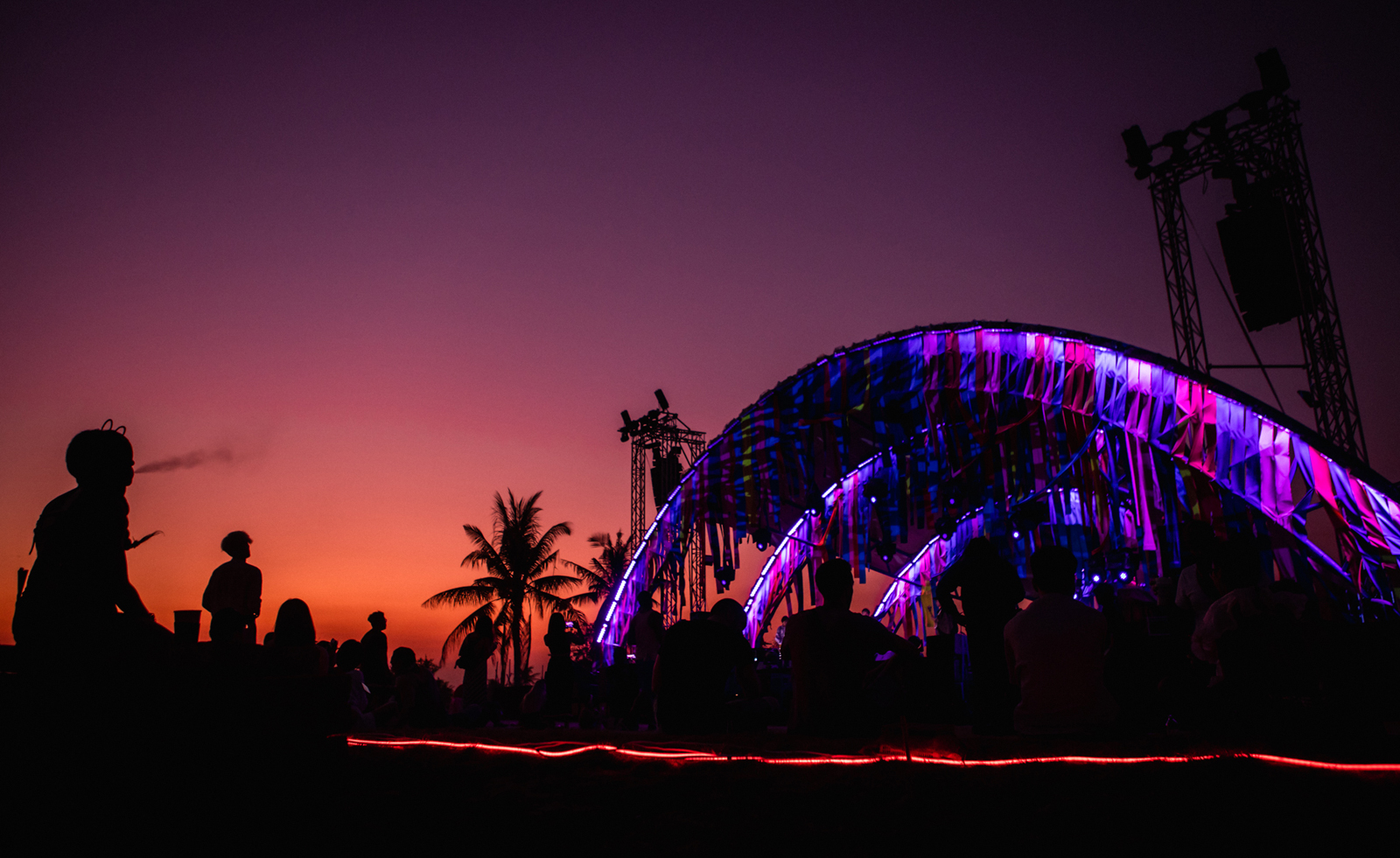
In mid-December the annual Wonderfruit festival returned for its fourth instalment near Pattaya on the Gulf of Thailand. Unlike many fairs and exhibitions that perennially set up in cities leaving unsustainable practices and one-use ephemera in their wake, Wonderfruit was founded in 2016 on the very principles of sustainability.
Founder and creative director Pete Phornprapha, third generation of the Siam Motors family who works by day as president and CEO of Bangkok Komatsu Sales Co Ltd is the brains behind the immersive, eco-friendly, community-minded music and lifestyle festival which offers regional and global beats, yoga classes, talks and workshops from artists, activists and architects.
Since 2018, Phornprapha has worked with Ab Rogers Design (ARD) to build a village of structures that support his environmentally-conscious ethos for an intelligent yet exhilarating festival. Combining experience across health and lifestyle design – from retail concepts for Comme des Garcons to an upcoming Maggie’s Centre in the UK completing in 2020, with local Thai craft, materials and techniques, founder Ab Rogers has created a characterful series of semi-permanent buildings to serve the ‘Wonderfruits’ – as the festival-goers are known as.

The Solar stage
‘Wonderfuit is a rarely enlightened client. Phornprapha has an exceptional vision and sustainable ethos. He owns the land so we can keep the structures all year round – the site is becoming a kind of sculpture park or eco community. There will be other events, and it will metamorphose and evolve as the community grows and more elements are added with a sense of permanence,’ says Rogers.
All the semi-permanent pavilions from 2018 were serviced before the 2019 festival kicked off – lessons about wind, shade and termites had been learned along the way. Termite-infested bamboo was replaced at the floating bath house (inspired by Thai fishing villages), and tartan shading added to the onion-shaped massage therapy rooms.
At the Eco-Pavilion (‘Why build a building if you can creating a mound plant bamboo and put up umbrellas,’ says Rogers of the design that features 124 hand-made, hand-painted cotton umbrellas) corn was replaced with robuster bamboo to shelter a new central umbrella with an air vent. And, at the Theatre of Feasts, an open kitchen and dining pavilion for 250 people, a lighter roof was installed, the table was rebuilt so it could be easily dismantled and new three-legged bar stools introduced.
‘I believe the key to building sustainably is to use temporary biodegradable materials in semi-permanent ways’ – Ab Rogers
‘I believe the key to building sustainably is to use temporary biodegradable materials in semi-permanent ways. These structures need up keep, they need care. We must take responsibility for what we make, and by doing so avoid the use of concrete materials and non-degradable plastics,’ says Rogers.
Wallpaper* Newsletter
Receive our daily digest of inspiration, escapism and design stories from around the world direct to your inbox.
The new structures for 2019 each celebrate indigenous materials, and the surrounding nature and landscape. children’s adventure playground features up-cycled bamboo seesaws, and a mud-slide house made of tyres. The Forbidden Fruit stage was designed with bamboo leftover from previous years, recycled prayer mats and the natural jungle created a creeping backdrop. Plus a new stage made out of fabric made from recycled PET bottles that Bangkok’s residents have been donating at dedicated Wonderfruit collection bins.
This year, ARD launched a design competition for a sustainable pavilion. Judged by Deyan Sudjic, Aric Chen, Farshid Moussavi and Thai Architect Boonserm Premthada, the prize was won by young architects Jeanne Pasquet and Helena Bosch of Trojans. Their bright bamboo ‘Woven House’ was coloured with red pigment from ‘Khrang’ a resin produced by the ‘laccifer lacca’ insect, bright yellow from gum extracted from the ‘garcinia dulcis’ plant or the berries of pomegranate, and intense blue made of fermented indigo leaves. ‘The beauty of the design was in the absence of materials,’ says Rogers. ‘It felt like an ephemeral piece of architecture, changing with light.’
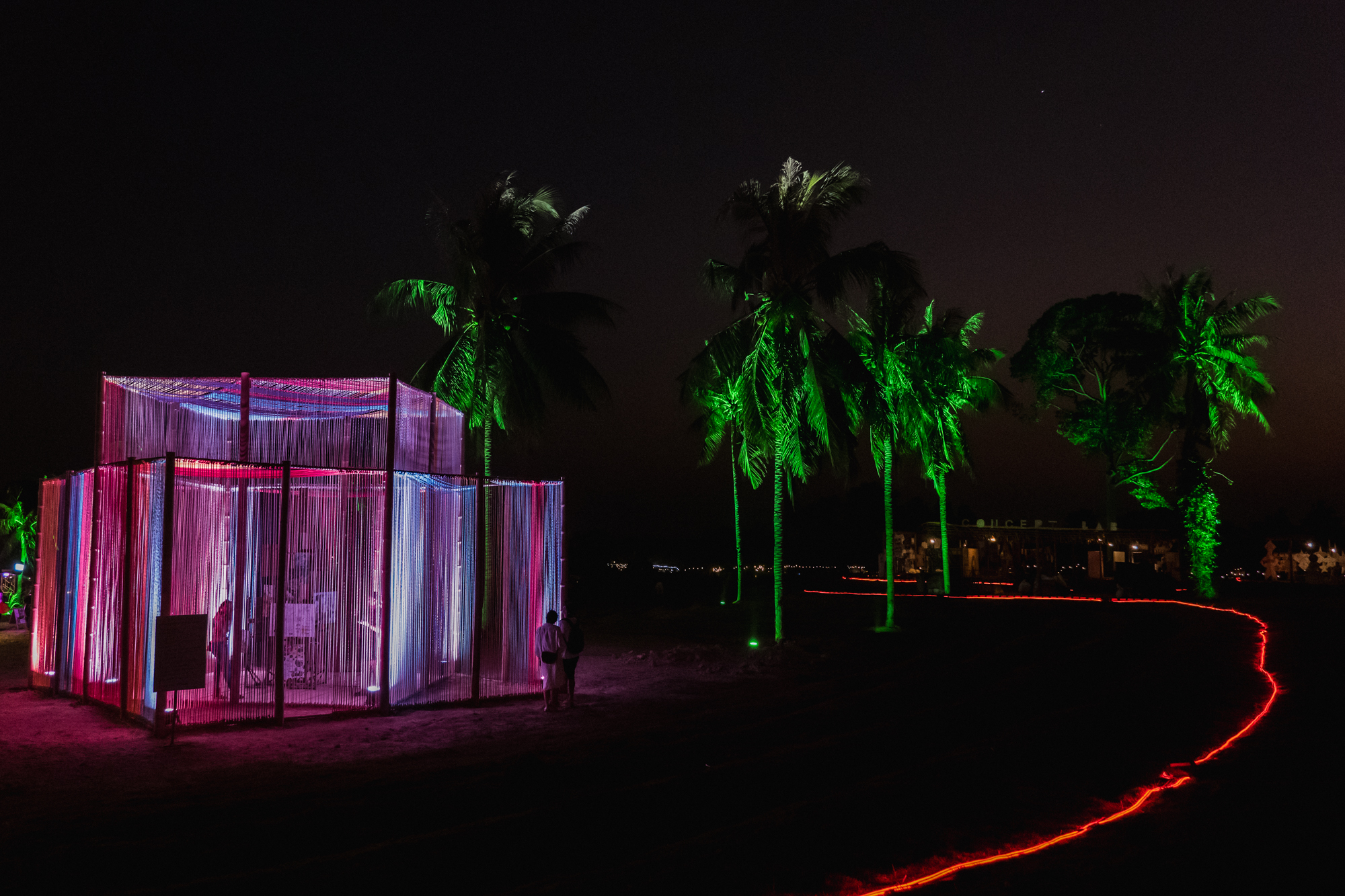
The Woven House by night
As well as sustainable architecture, there are plenty of other exciting and experimental ideas buzzing through the festival. Elin Eyborg, lead architect at ARD, created a magical path of 3000 rammed earth bricks painted red with organic pigment, laid as a performance over the festival and left to return back to the earth afterwards. Landscape architect Kochkorn Voraakhom discussed her work in Thailand, and food expert Kanitsanan Thanthitwat opened minds on eating bugs.
A modular wooden structure requiring no nuts or bolts designed by Burning Man artist, Gregg Fleishman was rebuilt with added shading. A forest of bamboo is being planted, and farmers from Chang Mai have set up a farm growing salad, sweetcorn, watermelons.
As well as the mastermind behind the Wonderfruit village, Rogers is also a Wonderfruit himself, where he finds the diversity of experiences unparalleled: ‘You can sit amidst growing lettuces, eat real food, and the next minute be dancing to deep techno in the Polygon (a 360 degree stage with holographic visuals), or meandering down to the quarry to discover Craig Richards playing.’


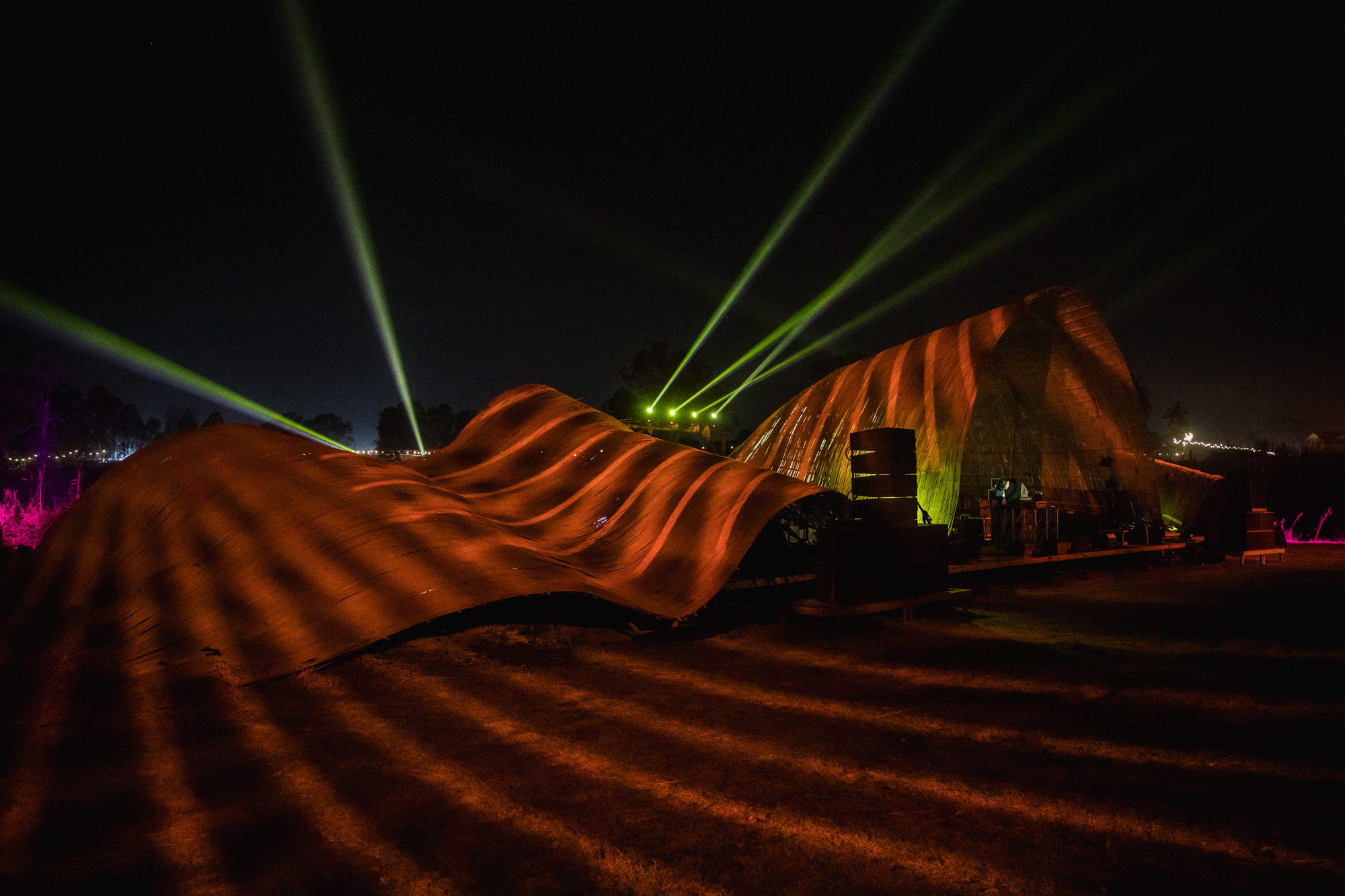

The Polygon stage offers a 3D, 360 degree sound stage designed with the aim of heightening emotions
INFORMATION
Wonderfruit Festival ran 12 - 16 December 2019
ADDRESS
Wonderfruit
The Fields at Siam Country Club
Pattaya
Thailand
Harriet Thorpe is a writer, journalist and editor covering architecture, design and culture, with particular interest in sustainability, 20th-century architecture and community. After studying History of Art at the School of Oriental and African Studies (SOAS) and Journalism at City University in London, she developed her interest in architecture working at Wallpaper* magazine and today contributes to Wallpaper*, The World of Interiors and Icon magazine, amongst other titles. She is author of The Sustainable City (2022, Hoxton Mini Press), a book about sustainable architecture in London, and the Modern Cambridge Map (2023, Blue Crow Media), a map of 20th-century architecture in Cambridge, the city where she grew up.
-
 Seven things not to miss on your sunny escape to Palm Springs
Seven things not to miss on your sunny escape to Palm SpringsIt’s a prime time for Angelenos, and others, to head out to Palm Springs; here’s where to have fun on your getaway
By Carole Dixon
-
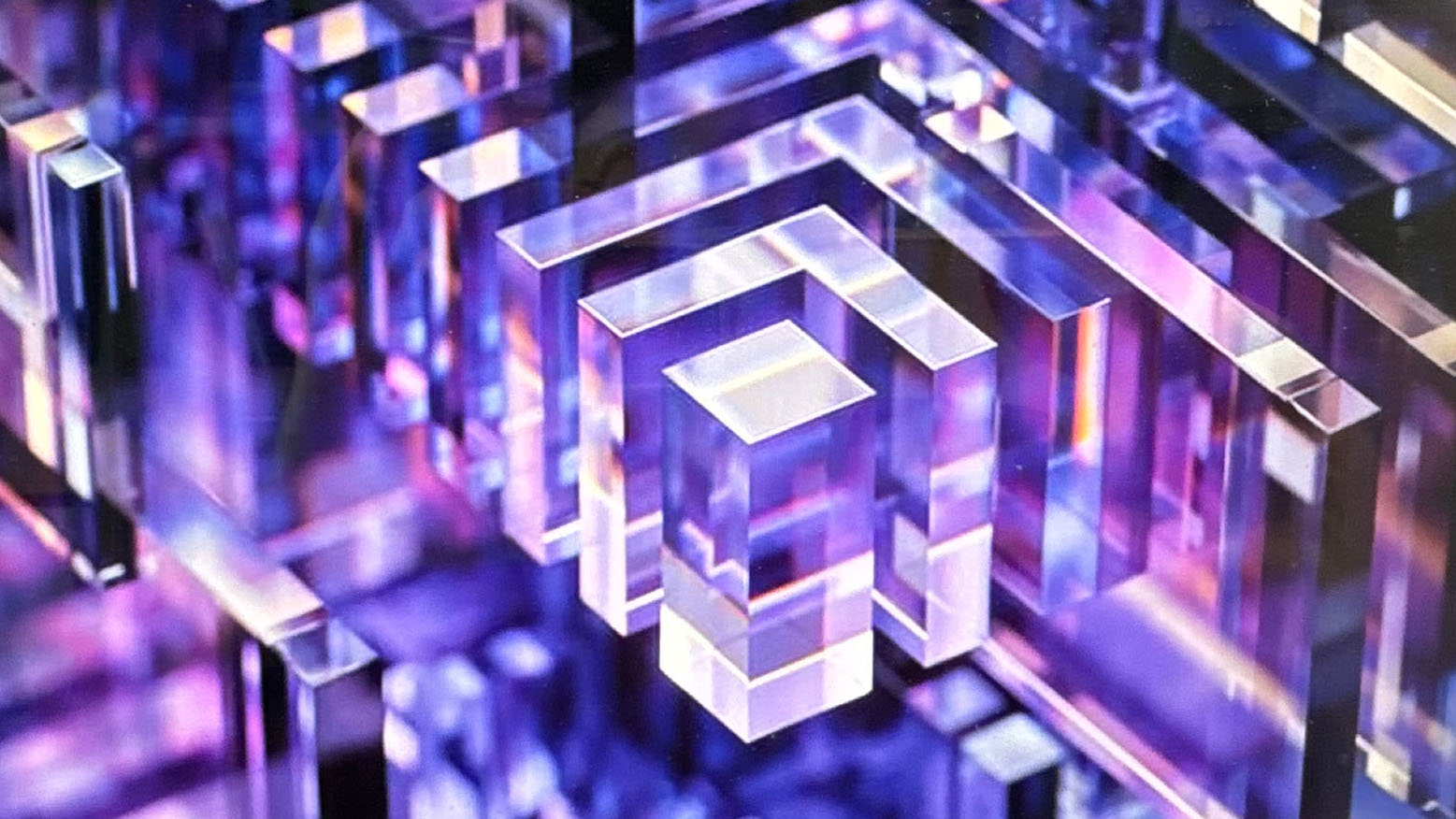 Microsoft vs Google: where is the battle for the ultimate AI assistant taking us?
Microsoft vs Google: where is the battle for the ultimate AI assistant taking us?Tech editor Jonathan Bell reflects on Microsoft’s Copilot, Google’s Gemini, plus the state of the art in SEO, wayward algorithms, video generation and the never-ending quest for the definition of ‘good content’
By Jonathan Bell
-
 ‘Independence, community, legacy’: inside a new book documenting the history of cult British streetwear label Aries
‘Independence, community, legacy’: inside a new book documenting the history of cult British streetwear label AriesRizzoli’s ‘Aries Arise Archive’ documents the last ten years of the ‘independent, rebellious’ London-based label. Founder Sofia Prantera tells Wallpaper* the story behind the project
By Jack Moss
-
 Explore wood architecture, Paris' new timber tower and how to make sustainable construction look ‘iconic’
Explore wood architecture, Paris' new timber tower and how to make sustainable construction look ‘iconic’A new timber tower brings wood architecture into sharp focus in Paris and highlights ways to craft buildings that are both sustainable and look great: we spoke to project architects LAN, and explore the genre through further examples
By Amy Serafin
-
 Wallpaper* Architects’ Directory 2024: meet the practices
Wallpaper* Architects’ Directory 2024: meet the practicesIn the Wallpaper* Architects Directory 2024, our latest guide to exciting, emerging practices from around the world, 20 young studios show off their projects and passion
By Ellie Stathaki
-
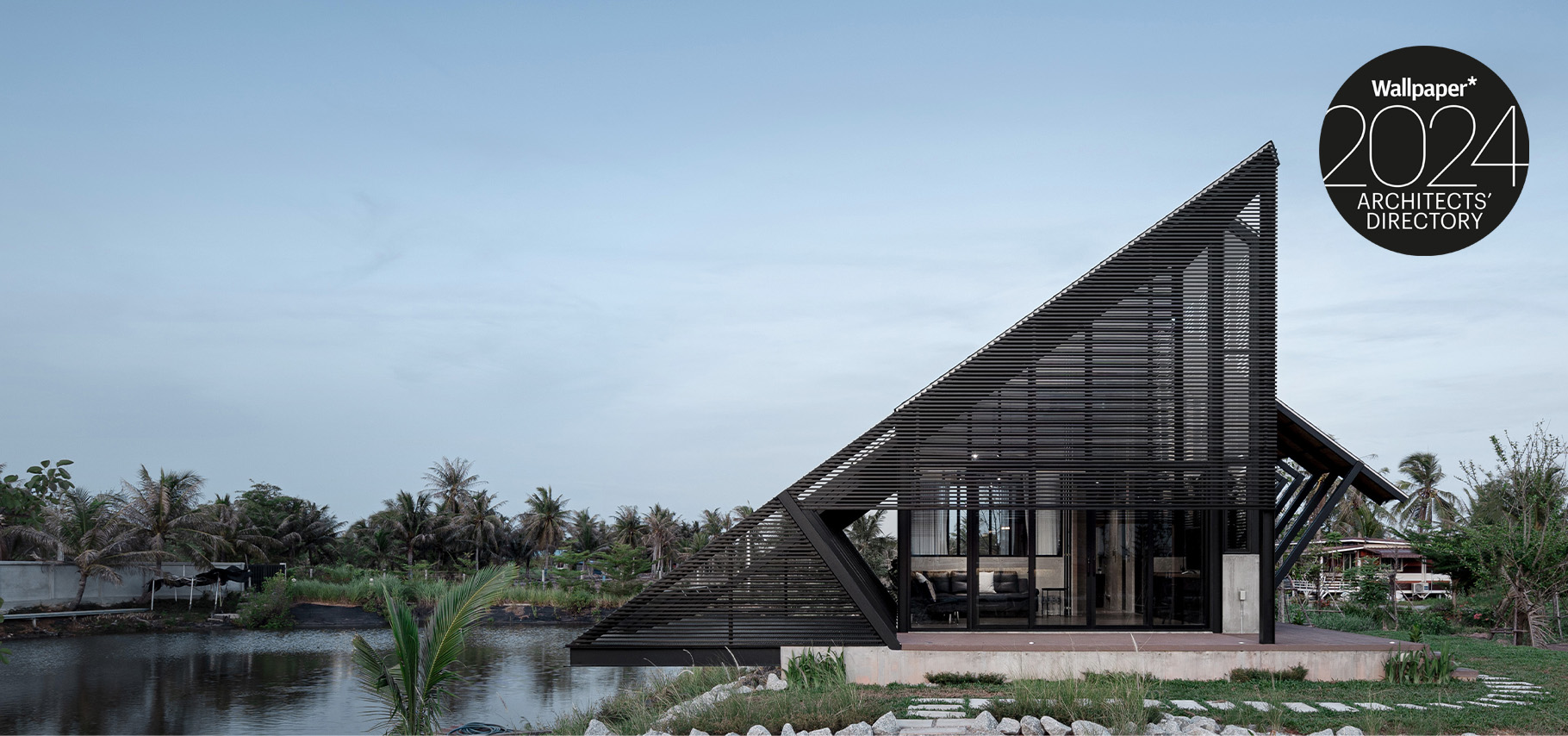 Explore Touch Architect's triangular Thai home
Explore Touch Architect's triangular Thai homeBased in the Thailand, Touch Architect joins the Wallpaper* Architects’ Directory 2024, our annual round-up of exciting emerging architecture studios
By Tianna Williams
-
 Building with bamboo: In Bali, designer, Elora Hardy, shares her tips and experience
Building with bamboo: In Bali, designer, Elora Hardy, shares her tips and experienceBamboo architecture can be powerful and sustainable; here, we talk to Ibuku's Elora Hardy, who shares her tips, thoughts and experience in working with the material in Bali
By Ellie Stathaki
-
 Hermitage Mews is a net-zero family of homes in London’s Crystal Palace
Hermitage Mews is a net-zero family of homes in London’s Crystal PalaceHermitage Mews by Gbolade Design Studio is a sustainable residential complex in south London's Crystal Palace, conceived to be green and contextual
By Ellie Stathaki
-
 Sustainable architecture: 46 innovative and inspiring building designs
Sustainable architecture: 46 innovative and inspiring building designsThis is sustainable architecture at its best: from amazing abodes to centres of care and hard-working offices, these buildings not only look good but also do good
By Ellie Stathaki
-
 Inside-outside living at Crescent Bay Beachfront Villas, Thailand
Inside-outside living at Crescent Bay Beachfront Villas, ThailandA piece of Phuket paradise is now available for purchase, in the form of Crescent Bay Beachfront Villas by Duangrit Bunnag
By Simon Mills
-
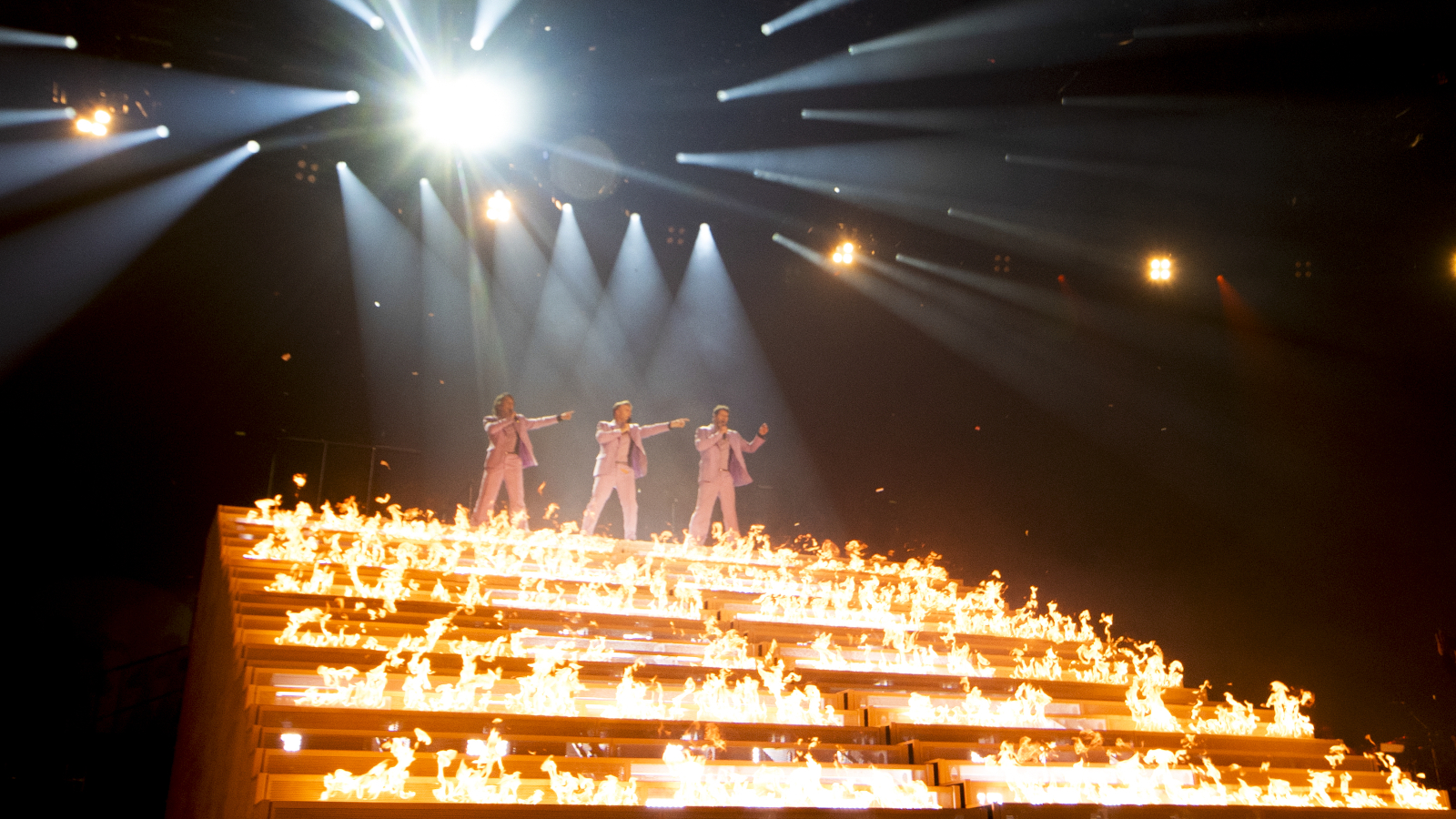 ‘How we make our audience go wow’: Take That on tour
‘How we make our audience go wow’: Take That on tourBehind the scenes of the Take That tour set design. Wallpaper* speaks to the band and the architects about the flames, fountains, paper storms and twin ten-tonne kinetic staircases that we saw live at London's O2
By Bridget Downing